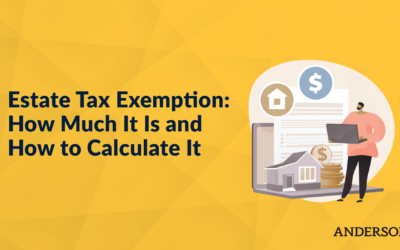Updated March 2, 2021
Trusts are versatile estate planning tools that provide many benefits. A qualified personal residence trust (QPRT) is used to remove the value of a qualified residence from the estate. Let’s take a closer look at how a QPRT works.
How Does a Qualified Personal Residence Trust Work?
- Residence is Removed from the Owner’s Estate
- Transfer a Residence to a Beneficiary at a Reduced Gift Tax Rate
- Trust Creator Can Live in the Residence for the Specified Period
- QPRT Creators Can Stay After the Specified Period by Paying Rent
- If the Trust Grantor Passes Away Before the Trust Period Ends, the Residence Returns to the Estate
- Can Lock in Exemption Values
- Provide Asset Protection and Other Trust Benefits
- Limits to Selling a Residence in a QPRT
A qualified personal residence trust is a type of trust that removes a residence from the owner’s estate and gifts it to the beneficiary who may pay income tax. However, the owner retains the right to live in the primary residence for a specified period. This is called the “retained income period,” after which the residence transfers to the beneficiary.
There are two types of trusts, revocable and irrevocable. A revocable trust, also called a living trust, allows the creator or grantor to remove the assets. In contrast, an irrevocable trust, like a QPRT, cannot easily be undone or changed. There are benefits to these kinds of trusts, such as saving on estate or gift taxes and providing asset protection.
A QPRT is an irrevocable trust that gifts a residence to a beneficiary but allows the owner to retain the right to live in the residence for the period of the trust. To find out if a QPRT is right for you, it would be best to establish an attorney-client relationship with an experienced tax attorney who can calculate how much money you can save.
Residence is Removed from the Owner’s Estate
Creating a qualified personal residence trust allows the owner of an asset to place that asset in “trust” for a future beneficiary, such as a child or grandchild. When the trust is funded by the owner, the asset titles are updated to reflect the trust’s ownership of the residence. Since this is an irrevocable trust, the QPRT removes the residence from the owner’s estate for taxation purposes. For many taxpayers, their residence is the largest part of their estate. A qualified residence is either a primary or secondary home, such as a vacation home. You can have multiple qualified personal residence trusts and even create multiple QPRTs, each for a percentage of a single residence.
Transfer a Residence to a Beneficiary at a Reduced Gift Tax Rate
One of the key advantages of a QPRT for qualified real estate is that you can transfer a residence to someone else in a way that lowers how the transfer is taxed. Instead of paying a high estate tax rate, the owner can place the residence in a trust at its current fair market value—but only a portion of that value is taxed. This is possible because the owner retains some interest in the residence over a period of time.
Calculating the value of the QPRT requires using the value of the residence, the length of the trust, and the Applicable Federal Rates published by the Internal Revenue Service (IRS) each month. It is important to note that the benefits of a QPRT fluctuate with changes to the Internal Revenue Code, which may happen frequently. Be sure to check with a qualified tax professional to see if a QPRT is the right choice for your estate plan.
Trust Creator Can Live in the Residence for the Specified Period
A major advantage of a QPRT is that the trust creator can continue to live in the residence after it is placed in the trust. The time period specified in the trust documents determines how long the owner retains the right to live in the property. At the end of this retained income period, the asset will transfer to the beneficiary or beneficiaries.
For example, a homeowner and spouse who wish to leave their residence to their child can create a QPRT and place their home in trust for a period such as ten years. During those ten years, the couple continues to live in their home. After the time period expires, the residence will legally pass to their child, the beneficiary. The trustee who manages the trust on behalf of the grantor and beneficiary will ensure any required tax returns are filed, as well as paying any real estate taxes.
QPRT Creator Can Stay After the Specified Period by Paying Rent
After the retained income period specified in the qualified personal residence trust expires, the residence transfers ownership to the beneficiary. In some cases, the original owners can continue to live in the home. It is possible for the trust creator to stay in the residence by paying rent to the beneficiary. The rent paid must be the fair market value rentals in that area. This form of renting actually provides another opportunity for the trust creator to pass money to their beneficiary in a way that could legally avoid estate taxes.
If the Trust Grantor Passes Away Before the Trust Period Ends the Residence Returns to the Estate
An unfortunate risk of QPRTs is the possibility that the owner/trust grantor passes away during the trust period. When this happens, the residence is essentially removed from the trust and its current value is added to the owner’s estate. If the trust was created to avoid high estate tax rates (which can range up to 40%), this outcome could be disastrous. The assets in the QPRT could end up in probate court, a lengthy and costly process through which a court determines the outcome of your assets after death.
There are ways to mitigate this risk, such as creating multiple staggered QPRTs for different retained income periods, each holding a portion of the total value. However, a QPRT may not be the right move for you. Take into account your entire estate plan when considering a QPRT. The last thing you want to do is make estate planning mistakes, so it’s a very good idea to talk to a professional advisor about estate planning and asset protection.
Can Lock in Exemption Values
A qualified personal residence trust can be a good idea for some estates. However, the popularity of QPRTs has temporarily declined due to the recent changes to tax laws. The Tax Cuts and Jobs Act (TCJA), passed in 2017, increases the estate tax exemption from less than $6 million to over $11.4 million for single taxpayers and twice that for married couples. However, these increased exemptions are set to expire. After 2026, the exemption level will return to its previous value, unless it is extended.
The current high exemption levels actually diminish the usefulness of a QPRT—but this trust type has its uses, especially for those with large estates. You may still want to consider implementing a QPRT as part of your estate plan.
A QPRT can also be used to take advantage of the high exemption level now by locking the asset in an irrevocable QPRT. The estate tax exemption is tied into the lifetime gift tax exemption as a unified credit. These (temporarily) higher exemptions allow for a range of estate planning methods that were previously impractical. Take advantage of these tax changes to avoid paying high estate, gift, and generation-skipping tax (GST tax).
Provide Asset Protection and Other Trust Benefits
Trusts provide the added benefits of protecting assets. This includes protecting them from creditors who may sue, or spouses divorcing the trust beneficiary. Trusts are versatile tools which allow you to pass your assets to your heirs or designated beneficiaries. Consider a dynasty trust, or family trust, which is a trust designed to last a very long time across multiple generations. You can have a trust in other states or even outside the country managing certain assets. The details you can specify when forming a trust allow for a wide range of adaptability. For example, let’s say you wish to leave a portion of their inheritance to a child or grandchild but are concerned about their ability to manage that money. A trust can specify that the beneficiary must achieve a certain scholastic grade or pass regular drug screenings in order to be eligible for any income or assets. Trusts can also help achieve other tax deductions as well.
Limits to Selling a Residence in a QPRT
A disadvantage to a QPRT is that once a residence is placed in the trust, it can be difficult to remove it from the trust during its fixed-term period. Your options are limited, and it would be wise to consult with a tax professional on how to handle the dissolution of this type of trust. You may have to use a grantor retained annuity trust (GRAT), through which a trustee will pay out sale proceeds to the grantor over a period of time before the remainder transfers to the original intended beneficiary. You may also be able to reinvest the proceeds from selling the residence into another residence.
Is a QPRT Right for Me?
You may be wondering if a QPRT is the right choice for your residence. Consider your options when planning your estate and seek legal advice from a professional tax attorney to ensure you don’t pay more than you legally have to in estate taxes.
From 2018 to 2026, the high estate tax exemption will reduce the need to use a qualified personal residence trust for estate tax purposes. However, your particular situation may be different, especially if you have a large estate. A QPRT may help you protect your assets, lower the impact of taxes, and pass more of your estate to those you want after you leave this world.
Using trusts to manage your assets gives you more control over how those assets are dispersed and under what conditions. If you want to gift your home to a beneficiary and take advantage of recent tax changes—but still live in your home for a while—a QPRT may be a good idea. Keep in mind that if a grantor passes away during a QPRT retained income period, the residence will be added back to the estate. Because of this risk, a QPRT may be best for those with a long life expectancy.
If you still owe mortgage payments on the property, it impacts the ease of creating a QPRT. There are future implications for the beneficiary, such as how the step-up in basis is calculated for income tax purposes. For this reason, there are tax benefits to using a QPRT to create a family or dynasty trust when providing a home for your heirs and future heirs.
Qualified Personal Residence Trusts
QPRTs are not for everyone right now, but these trusts pack a punch and can help out some taxpayers avoid unnecessary taxes. You can have multiple trusts to manage different asset types and have a QPRT to manage a primary and secondary home. A trust basically takes ownership of an asset, and if it is an irrevocable trust (such as a QPRT), it cannot easily be changed. Because the grantor or creator no longer owns the asset, it is not counted as part of the estate and can thus lower the taxable amount of the remaining estate.
The transfer of the residence is still taxed in another way at a lower, discounted, amount. One of the great things about a QPRT is that the grantor can remain in the house, even after they have gifted it to the trust for a beneficiary. The owners can stay until the trust time limit expires, at which point the property officially belongs to the beneficiary. In some cases, the owners can stay after the limit by paying rent to the beneficiary.
Keep in mind that if the trust grantor dies before the fixed term retained income period ends, the trust will be void and the residence is added to the estate. This is the primary risk of using a QPRT. There are also restrictions on how property can be removed from a qualified personal residence trust. Despite the downsides, there are plenty of reasons to consider using a qualified personal residence trust. Contact us today to find out if a QPRT is right for your estate plan.
As always, take advantage of our free educational content and every other Tuesday we have Toby’s Tax Tuesday, a great educational series. Our Structure Implementation Series answers your questions about how to structure your business entities to protect you and your assets.
Additional Resources:
- Claim your FREE Strategy Session
- Join our next Tax & Asset Protection event to learn more advanced tax minimization & entity structuring strategies
- For all things investing, check out the Infinity Investing YouTube channel
- Subscribe to our YouTube channel to make sure you never miss the latest strategies & updates
3 Steps to Create an Invisible Investor Strategy















